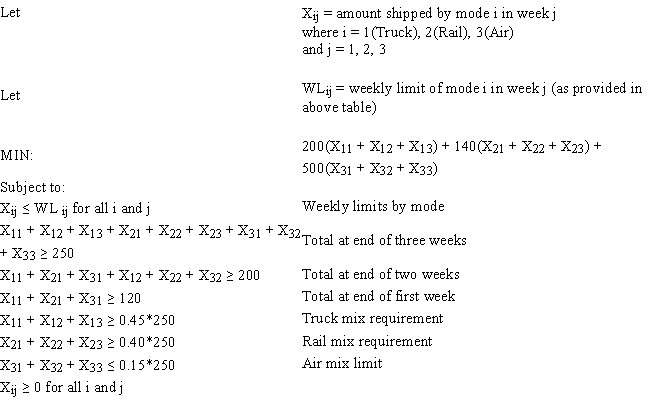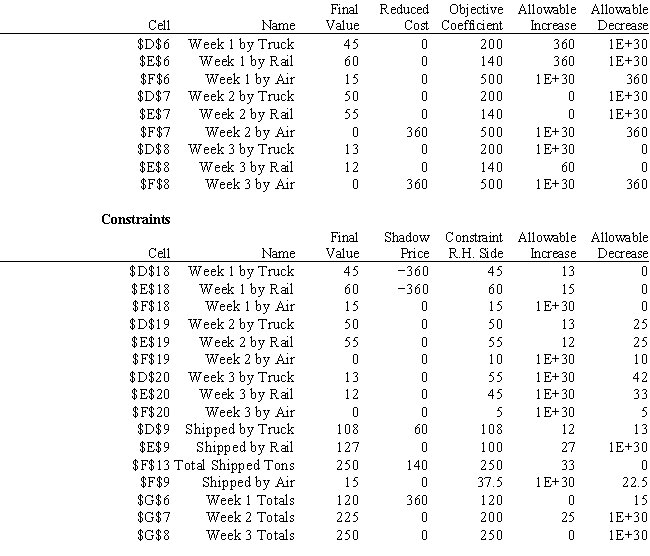Exhibit 4.1
The following questions are based on the problem below and accompanying Analytic Solver Platform sensitivity report.
Carlton construction is supplying building materials for a new mall construction project in Kansas. Their contract calls for a total of 250,000 tons of material to be delivered over a three-week period. Carlton's supply depot has access to three modes of transportation: a trucking fleet, railway delivery, and air cargo transport. Their contract calls for 120,000 tons delivered by the end of week one, 80% of the total delivered by the end of week two, and the entire amount delivered by the end of week three. Contracts in place with the transportation companies call for at least 45% of the total delivered be delivered by trucking, at least 40% of the total delivered be delivered by railway, and up to 15% of the total delivered be delivered by air cargo. Unfortunately, competing demands limit the availability of each mode of transportation each of the three weeks to the following levels (all in thousands of tons):  The following is the LP model for this logistics problem.
The following is the LP model for this logistics problem. 

-Refer to Exhibit 4.1. Should the company negotiate for additional air delivery capacity?
Correct Answer:
Verified
View Answer
Unlock this answer now
Get Access to more Verified Answers free of charge
Q63: Identify the different sets of basic variables
Q64: Exhibit 4.2
The following questions correspond to the
Q65: Given the following Analytic Solver Platform sensitivity
Q66: Jones Furniture Company produces beds and desks
Q67: A farmer is planning his spring planting.
Q69: Jones Furniture Company produces beds and desks
Q70: Exhibit 4.1
The following questions are based on
Q71: Identify the different sets of basic variables
Q72: Exhibit 4.2
The following questions correspond to the
Q73: Is the optimal solution to this problem
Unlock this Answer For Free Now!
View this answer and more for free by performing one of the following actions

Scan the QR code to install the App and get 2 free unlocks

Unlock quizzes for free by uploading documents